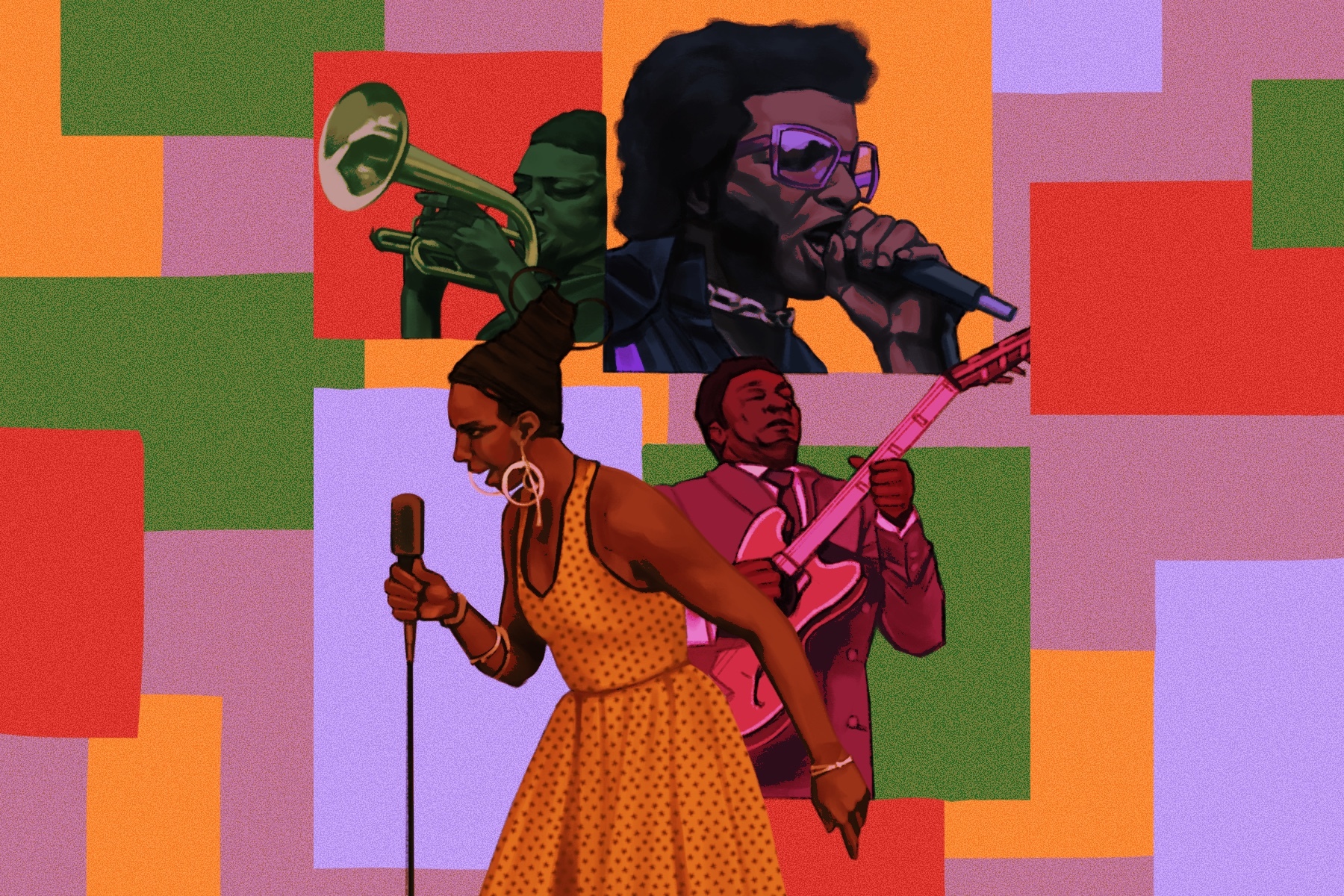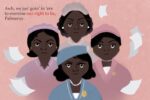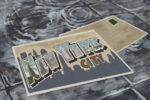New York City is a metropolis whose imagery is etched into the minds of people across the globe. The towering magnitude of the Empire State Building, sprawling beauty of Central Park and welcoming promise of the Statue of Liberty are easily recognizable icons of the city for most. For many, cultural awareness of the city extends north of Midtown to include the vast wealth and prestige of the Upper West and East Sides.
But at 110th Street, the opulent romanticism of Manhattan abruptly fades away into an entirely different city, one most people are not familiar with. Above the clattering subway commute between 110th Street and the hallowed ground of Yankee Stadium lies a neighborhood that, despite being frequently overlooked, is one of the most fascinating neighborhoods in America.
Harlem has been a cultural powerhouse since its founding in the 17th century, maintaining close ties to every major Black artistic movement of the last 150 years. Following an influx of Southern African Americans during the Great Migration, the Harlem Renaissance ignited and saw a flourishing of jazz, poetry and the birth of a rare Black middle class.
Over the following decades, despite being subjected to an influx of crime and governmental mismanagement, Harlem continued to be a hotbed of creative expression and always maintained a connection to the musical zeitgeists of each successive generation. The story of Harlem is one of creativity, neglect and resilience, all themes that feature prominently in the newly released documentary titled “Summer of Soul (…Or, When the Revolution Could Not Be Televised).”
Multi-instrumentalist and producer Questlove has commendably revived long-forgotten footage of the Harlem Cultural Festival, an event that has largely been erased from the history books. The 1969 event was the third annual iteration of a concert series that occurred between June and August in the neighborhood’s Mt. Morris Park. The event hosted some of the most prominent Black musicians of the decade, including Stevie Wonder, Nina Simone and B.B. King. Though the series of performances was advertised as an opportunity to highlight the mastery of Black artists from across the nation, the event was equally about the social conditions of African Americans in New York.
“Summer of Soul” characterizes 1969 as a pivotal year for Black Power movements across the country, best exemplified by footage of the Black Panthers providing the event’s security in the absence of police. After the killings of Malcolm X and Martin Luther King Jr., a sense of disillusionment with the government’s ability to provide a secure existence for African Americans set in, prompting a growth in the popularity of Afrocentric thought and counterculture more broadly. The cultural milieu of an ideologically diverse Harlem is visually portrayed by the audience’s clothing, which is a balanced mix of traditional African garments, trendsetting streetwear and ‘60s Americana fashion.
Musa Jackson, a young attendee interviewed by Questlove for “Summer of Soul,” offers his memory of the park, which was swarmed by food stands selling chicken, greens and beer. Jackson summarizes the comingling, diverse forms of Black identity affectionately, calling the concert series “the ultimate Black barbeque.”
Given its scheduling adjacent to the more widely popular festival in the summer of ‘69, the raw footage was unsuccessfully advertised by the camera crew as a “Black Woodstock.” Such an assessment could only result from comparing the two on paper and throwing artistic integrity to the wind. The distinctly folk and rock themes of Woodstock stand in stark contrast to the Harlem Cultural Festival’s through lines of soul, spirituality and Black Power.
Over the course of the summer, 300,000 attendees flooded into Mt. Morris Park, oftentimes perilously hanging from tree branches or sitting atop the park’s cliffs, listening to a series of artists that defined their genres and were tuning into the Afrocentric sensibilities of the era.
While Max Yasgur’s farm is recognized by some as the singular location of Woodstock, its sense of place is less precise, and the scenes captured on its recording are generally reminiscent of rural communities throughout America. The footage of the Harlem Cultural Festival, on the other hand, is awash with imagery and sounds that can only be produced in one place. If the patently New York enthusiasm of the crowd doesn’t reveal that the event took place in Harlem, the gritty yet vibrant streetscapes that envelop the park certainly will.
In framing his portrayal of the summer in “Summer of Soul,” Questlove wanted to ensure that authenticity was married to a narrative demonstrating the cultural significance of the once-in-a-lifetime phenomenon. When asked about his hopes for the film’s reception, Questlove explained that he “was trying to figure out how to grab [the attention of] Gen-Z and millennial audiences who might not know Sly and the Family Stone, but probably know the Humpty Dance, because they know the music Sly’s been sampled in.” There is certainly a generational disconnect between contemporary cultural initiatives and the civil rights movements highlighted during the festival.
There is a notable emphasis on faith and Christianity in particular, thoroughly represented by gospel performances that included “Oh Happy Day” sang by the Edwin Hawkins Singers and the blues-influenced, religiously-minded set performed by the Staples Singers. Religion bled into other components of the festival, whose organizers made a concerted effort to bring in a host of personalities beyond music. One such individual was Reverend Jesse Jackson, who unofficially emceed a portion of the program and referenced biblical symbolism while speaking about the importance of honoring the recently assassinated Martin Luther King Jr.
It is fitting that the Harlem Cultural Festival maintained an overtone of activism since the state of the community in the late 1960s was growing increasingly desperate. As “Summer of Soul” makes clear, Harlem was unfortunately submerged into numerous drug epidemics around the time of the festival, which contributed to the impression that Harlem was an unsafe neighborhood. None of this is visible in the footage of the dancing crowd or upbeat performances, which reflect an optimism the event’s producers hoped would change the atmosphere of Uptown.
The crowd’s singular focus on honoring Black artistry is demonstrated in a scene in which festival footage is interspersed with news clips of the ongoing Apollo 11 moon landing. The interplay of footage is followed up by a series of press interviews with concertgoers in the park, who respond primarily with indifference toward the mission. For those in attendance, the significance of lunar exploration paled in comparison to the monumental musical experience playing out before them. The irreverence of the crowd is humorously touched upon by comedian Jackie “Moms” Mabley, who declares, “A man done gone to the moon. I went as far as Baltimore with them, then I got off.”
Though there are certain components of the show that feel strictly rooted in the past, much of the festival’s spirit is truly timeless. Motown, a genre that remains abundantly popular with an older crowd today, featured prominently in the musical lineup and reaches a crescendo during a performance by David Ruffin, a former member of the Temptations. There is a timelessness to the swagger of Ruffin’s performance, which summarizes the image of the titanic record label that made soul music an indelible part of the decade.
Nina Simone commands a similarly enduring air during her set, captivating the throng of people in the park with a riveting performance. During the film’s profile of her set, Reverend Al Sharpton speaks about her storytelling ability, observing that she sang “in her tone that is somewhere between hope and mourning.” Sharpton also comments that her musical attitude “defined a whole generation because you could hear in her voice our pain, but our defiance.”
Though not a native New Yorker, Simone perfectly captured the spirit of a Harlem eager and willing to become the blueprint for Black Power. At the end of her performance, Simone reads a David Nelson poem that repeatedly asks the crowd if they are ready to seize the moment and attain rights as a people. The energy she brings near the film’s conclusion creates the impression that the Harlem Cultural Festival marks the ascension of Black music as a resource for justice.
The film’s climax suddenly arrives when the vibrant footage of Nina Simone’s poetry reading abruptly cuts to black and white photos of the empty park littered with the festival’s tattered remnants. The juxtaposition hits home the tragedy of how a moment that contributed extensively to Black pride and self-determination could be widely ignored. It is only because of a contemporary desire to rediscover the history of the festival’s premise that “Summer of Soul” exists.
Though the film is born out of Questlove’s passion for preserving and sharing Black history, he does not develop an authoritative relationship with the viewer during the film. Instead, the narrative burden shifts to the interviews, with Musa Jackson punctuating the final moments with commentary that affirms the importance of releasing the festival footage. He reminds the audience, “You put memories away, and you don’t realize…Sometimes you don’t even know if they’re real. So, it’s almost confirmation that what I knew is real.”
The film is a confirmation for some and a new introduction for others, successfully executing the difficult task of distilling an entire summer of artistic expression down to two hours. Questlove’s production has enabled what was once a mythical story threatened by generational loss to be told on the silver screen, beautifully enshrining it for the ages.

















